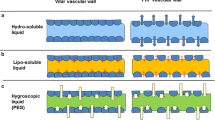Abstract
Background and purpose
Multi-phase postmortem CT angiography (MPMCTA) is increasingly being recognized as a valuable adjunct medicolegal tool to explore the vascular system. Adequate interpretation, however, requires knowledge about the most common technique-related artefacts. The purpose of this study was to identify and index the possible artefacts related to MPMCTA.
Material and methods
An experienced radiologist blinded to all clinical and forensic data retrospectively reviewed 49 MPMCTAs. Each angiographic phase, i.e. arterial, venous and dynamic, was analysed separately to identify phase-specific artefacts based on location and aspect.
Results
Incomplete contrast filling of the cerebral venous system was the most commonly encountered artefact, followed by contrast agent layering in the lumen of the thoracic aorta. Enhancement or so-called oedematization of the digestive system mucosa was also frequently observed.
Conclusion
All MPMCTA artefacts observed and described here are reproducible and easily identifiable. Knowledge about these artefacts is important to avoid misinterpreting them as pathological findings.









Similar content being viewed by others
References
Grabherr S, Djonov V, Yen K et al (2007) Postmortem angiography: review of former and current methods. AJR 188:832–838
Schoenmackers J (1960) Technique of postmortem angiography with reference to related methods of postmortem blood vessel demonstration [in German]. Ergebn Allg Pathol Anat 39:53–151
Schlesinger JM (1938) An injection plus dissection study of coronary artery occlusions and anastomosis. Am Heart J 15:528–568
Dirnhofer R et al (2006) VIRTOPSY: minimally invasive, imaging-guided virtual autopsy. Radiographics 26(5):1305–1333
Thali M, Dirnhofer R, Vock P (eds) (2009) The virtopsy approach: 3D optical and radiological scanning and reconstruction in forensic medicine. CRC, New York
Jeffery AJ (2010) The role of computed tomography in adult post-mortem examinations: an overview. Diagn Histopathol 16(12):546–551
O’Donnell C (2010) An image of sudden death: utility of routine post-mortem computed tomography scanning in medico-legal autopsy practice. Diagn Histopathol 16(12):552–555
Weustink AC et al (2009) Minimally invasive autopsy: an alternative to conventional autopsy? Radiology 250(3):897–904
Poulsen K, Simonsen J (2007) Computed tomography as a routine in connection with medico-legal autopsies. Forensic Sci Int 171(2–3):190–197
Roberts IS, Benamore RE, Benbow EW, Lee SH, Harris JN, Jackson A, Mallett S, Patankar T, Peebles C, Roobottom C, Traill ZC (2012) Postmortem imaging as an alternative to autopsy in the diagnosis of adult deaths: a validation study. Lancet 379(9811):136–142
Saunders S et al (2010) Post-mortem computed tomography angiography: past, present and future. Forensic Sci Med Pathol 7:271–277
Grabherr S, Djonov V, Friess A et al (2006) Postmortem angiography after vascular perfusion with diesel oil and a lipophilic contrast agent. AJR 187:W515–W523
Jackowski C, Thali M, Sonnenschein M et al (2005) Virtopsy: postmortem minimally invasive angiography using cross section techniques—implementation and preliminary results. J Forensic Sci 50:1175–1186
Grabherr S et al (2008) Two-step postmortem angiography with a modified heart lung machine: preliminary results. AJR 190(2):345–351
Ross S, Spendlove D, Bolliger S (2008) Postmortem whole-body CT angiography: evaluation of two contrast media solutions. AJR 190:1380–1389
Roberts ISD, Peebles C, Roobottom C, Traill ZC (2011) Diagnosis of coronary artery disease using minimally invasive autopsy: evaluation of a novel method of postmortem coronary CT angiography. Clin Radiol 66(7):645–650
Saunders S, Morgan B, Raj V, Robinson C, Rutty G (2011) Targeted postmortem computed tomography cardiac angiography: proof of concept. Int J Leg Med 125:609–616
Grabherr S et al (2010) Multi-phase post-mortem CT angiography: development of a standardized protocol. Int J Leg Med 125:791–802
Michaud K, Grabherr S, Doenz F, Mangin P (2012) Evaluation of postmortem MDCT and MDCT angiography for the investigation of sudden cardiac death related to atherosclerotic coronary artery disease. Int J Cardiovasc Imaging 28:1807–1822
Palmiere C (2012) Detection of hemorrhage source: the diagnostic value of post-mortem CT angiography. Forensic Sci Int 222:33–39. doi:10.1016/j.forsciint.2012.04.031
Zerlauth JB, Doenz F, Dominguez A, Palmiere C, Uské A, Meuli R, Grabherr S (2013) Surgical interventions with fatal outcome: utility of multi-phase postmortem CT angiography. Forensic Sci Int 225:32–41
Batra P, Bigoni B, Manning J, Aberle DR, Brown K, Hart E, Goldin J (2000) Pitfalls in the diagnosis of thoracic aortic dissection at CT angiography. Radiographics 20(2):309–320
Wittram C, Maher MM, Yoo AJ, Kalra MK, Shepard J-A O, McLoud TC (2004) CT angiography of pulmonary embolism: diagnostic criteria and causes of misdiagnosis. Radiographics 24:1219–1238. doi:10.1148/rg.245045008
Schneider B, Chevallier C, Dominguez A, Bruguier C, Elandoy C, Mangin P, Grabherr S (2012) The forensic radiographer: a new member in the medico-legal team. Am J Forensic Med Pathol Am J Forensic Med Pathol 33(1):30–36
Anonymous (2000) Recommendation no R(99)3 of the committee of ministers to member states on the harmonization of medico-legal autopsy rules. Council of Europe, Committee of Ministers. Adopted by the Committee of Ministers on 2 February 1999 at the 658th meeting of the Ministers’ Deputies
Brinkmann B (1999) Harmonisation of medico-legal autopsy rules. Int J Legal Med 113(1):1–14
Acknowledgments
This study was financially supported by the Promotion Agency for Innovation of the Swiss Confederation (KTI Nr.10221.1 PFIW-IW) and by the Fondation Leenaards, Lausanne, Switzerland.
Conflicts of interest
The authors have no conflicts of interest to disclose.
Author information
Authors and Affiliations
Corresponding author
Additional information
C. Bruguier and P. J. Mosimann contributed equally to this work.
Rights and permissions
About this article
Cite this article
Bruguier, C., Mosimann, P.J., Vaucher, P. et al. Multi-phase postmortem CT angiography: recognizing technique-related artefacts and pitfalls. Int J Legal Med 127, 639–652 (2013). https://doi.org/10.1007/s00414-013-0840-9
Received:
Accepted:
Published:
Issue Date:
DOI: https://doi.org/10.1007/s00414-013-0840-9




